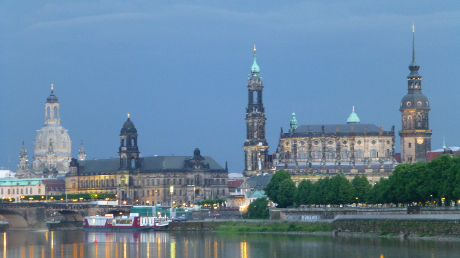 |
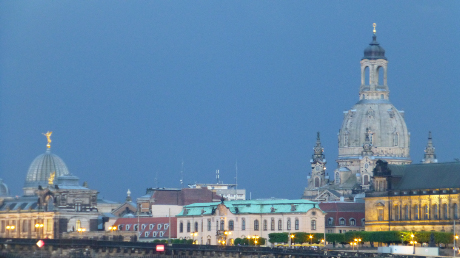 |
| We approached Dresden in the evening, which gave us ample opportunity to admire the magnificent skyline. |
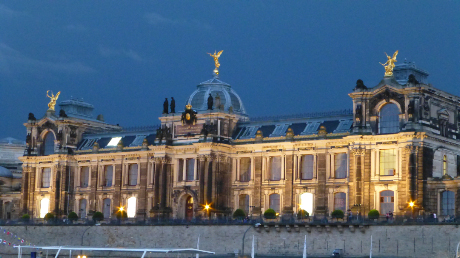 |
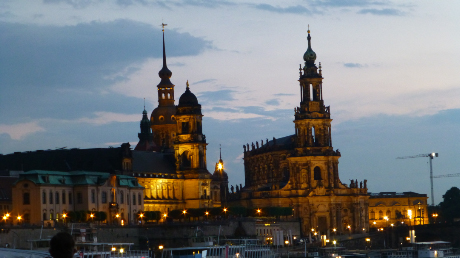 |
| Dresden was almost completely destroyed by Allied bombing in WWII but the city has rebuilt most of the pre-war buildings according to their original medieval and Renaissance plans. Where did they find the plans? The city archivists had put them in a safe place. Hooray for archivists! |
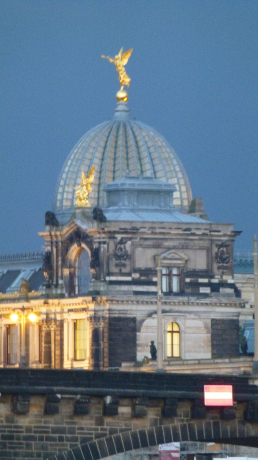 |
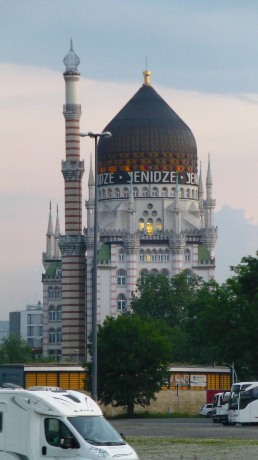 |
| The Frauenkirche (Church of Our Lady) catching the last rays of the sun. |
This oddity is not, as it looks, a mosque. It is a tobacco factory from the early 1900s. Since Turkish tobacco was the most popular kind, the owner wanted a "Turkish" feel to his plant. |
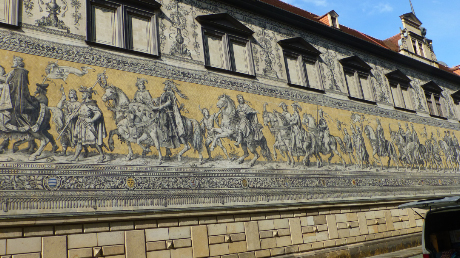 |
 |
| The Parade of Saxon Rulers. The city honors its Saxon heritage with a twist: the plants underneath good rulers are roses; under bad rulers they are thorns. |
The Semper Opera House was one of the most important music venues in 19th century Germany. It hosted the premiers of operas from composers such as Richard Strauss and Richard Wagner. Although it was rebuilt after the war, it is once again undergoing renovation and restoration. |
 |
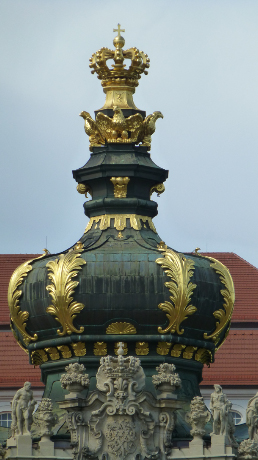 |
| Zwinger Palace is a Baroque masterpiece built in the early 1700s by Augustus the Strong. There is a large open area surrounded on all four sides by pavilions that are now used as museums. |
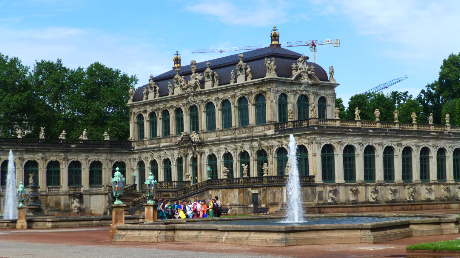 |
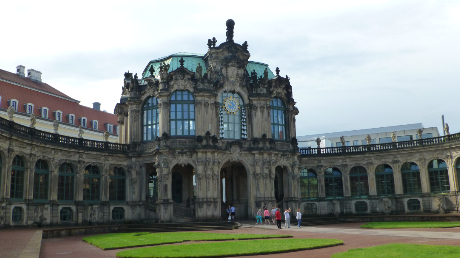 |
| The courtyard has about six major fountains as well as benches and walking paths. |
In one corner is the Glockenspielpavilion, or clock tower. |
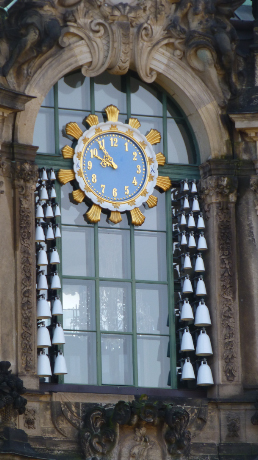 |
 |
| The clock tower is supplied with a carillon of bells made of Meissen porcelain. It is an operating carillon and chimes the quarter hours in sweet tones. |
We also visited the Green Vault, where the treasures of Saxony are stored. We have never before seen such a display of gold, precious gems, and incredible workmanship. |
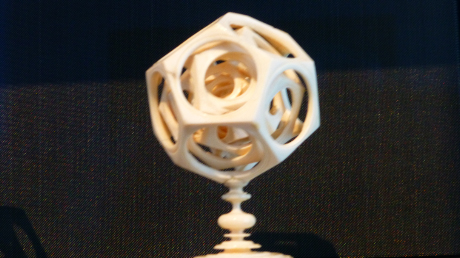 |
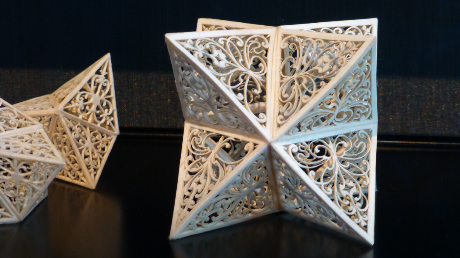 |
| Modern ivory carvers cannot figure out how these nested balls could have been carved from a single piece of ivory--but they were. |
|
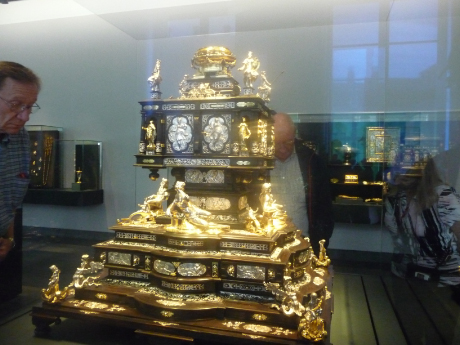 |
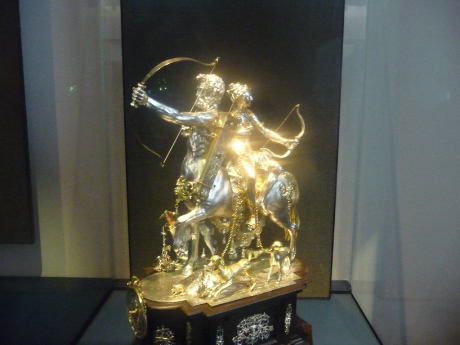 |
| |
|
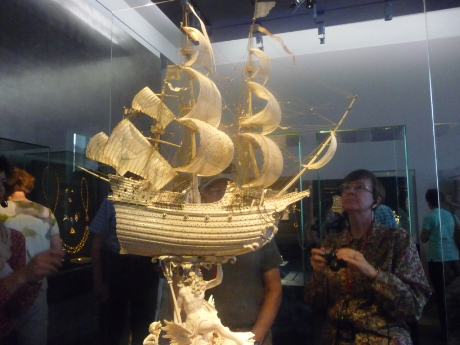 |
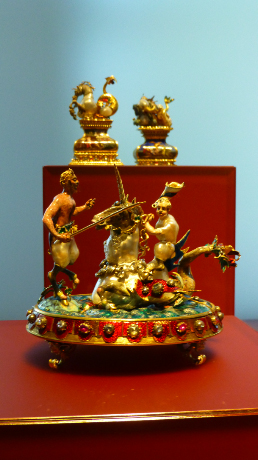 |
| An ivory boat. |
|
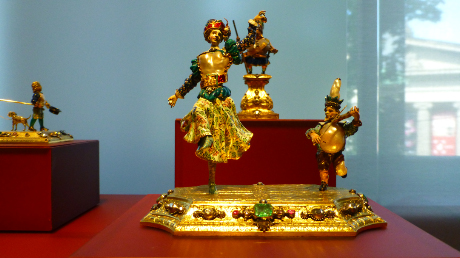 |
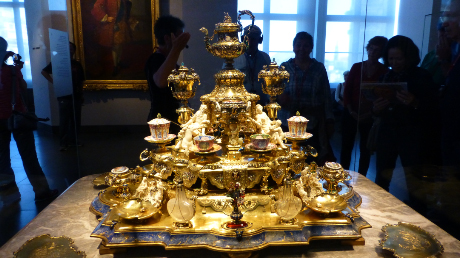 |
| Many of these items have clockwork interiors and can move while a tune is played. |
|
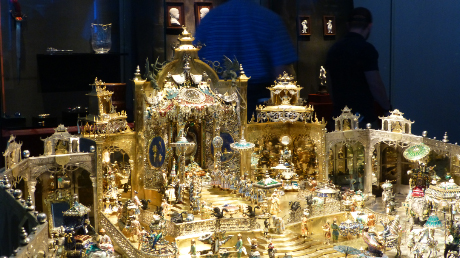 |
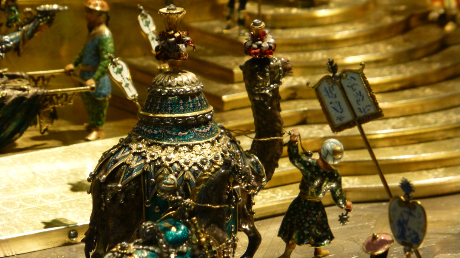 |
| The was probably the most impressive piece in the Green Vault--a scene of the Birthday of the Grand Mogul, crafted in 1701-8. Johann Melchior Dinglinger finished it before he had a buyer, hoping (correctly, as it turned out) that he could convince Augustus the Strong to buy it. Augustus was the only person in Europe at the time rich enough to afford it. |
 |
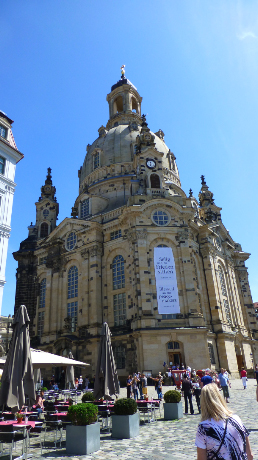 |
| There are 137 separate figures, each unique with enamel and jewels over gold |
The Church of Our Lady is the head Lutheran Church in Dresden. After WWII it was not rebuilt but instead was left as a memorial to the dead. After German reunification the people decided to rebuild it. The dark-colored bricks are from the original church, which were used as much as possible in the rebuilding. |
 |
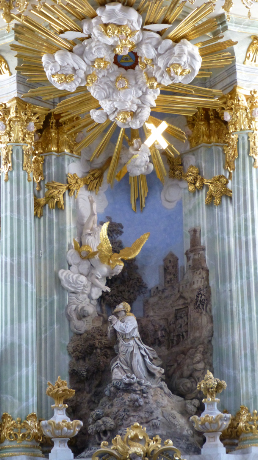 |
| The interior of the Church of Our Lady, showing the extremely elaborate (almost rococo) decoration. Both the building and the interior were done using only early-18th century techniques (except for the dome, which was built to modern safety standards). |
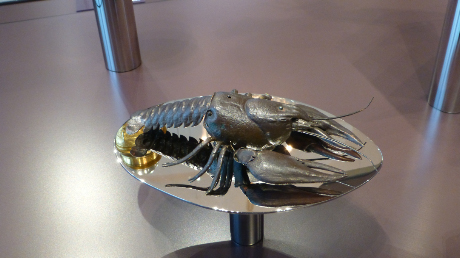 |
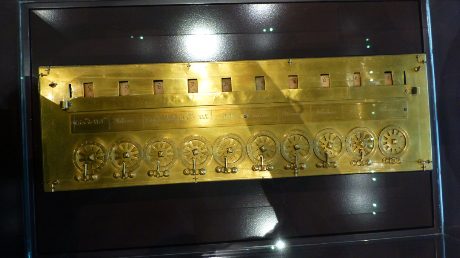 |
| As our last stop we looked in at the Mathematics and Physics Museum back at Zwinger palace. Some of the clockwork items were purely for fun, like this lobster which would scuttle back and forth on the floor or table during dinner parties. |
The Museum also houses Pascal's calculator, the first mechanical calculator to automatically change the digit to the left when a sum is more than 9 (for example, 23+8=31). In earlier calculators, such as an abacus, the user needs to manually move the "10s" indicator. |





























